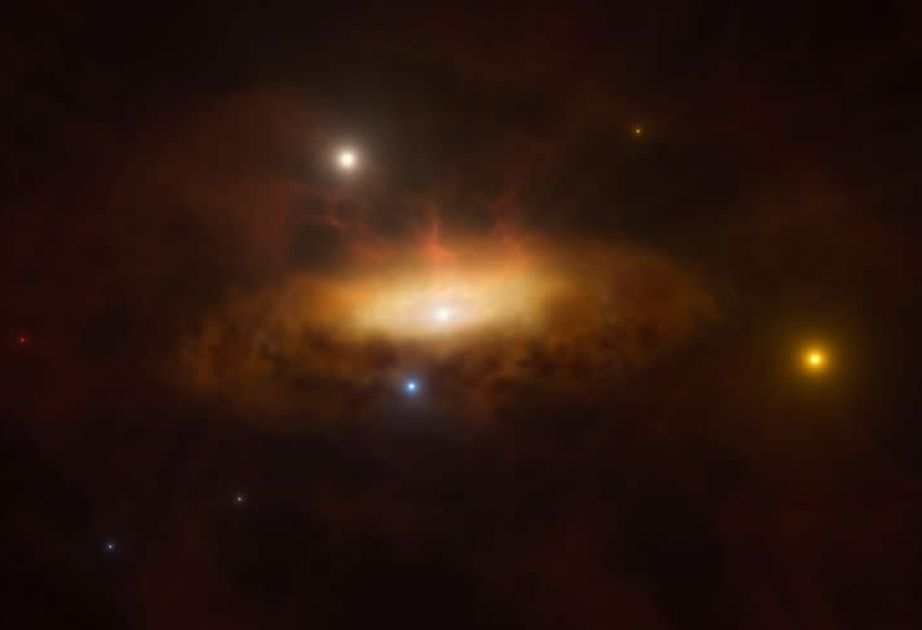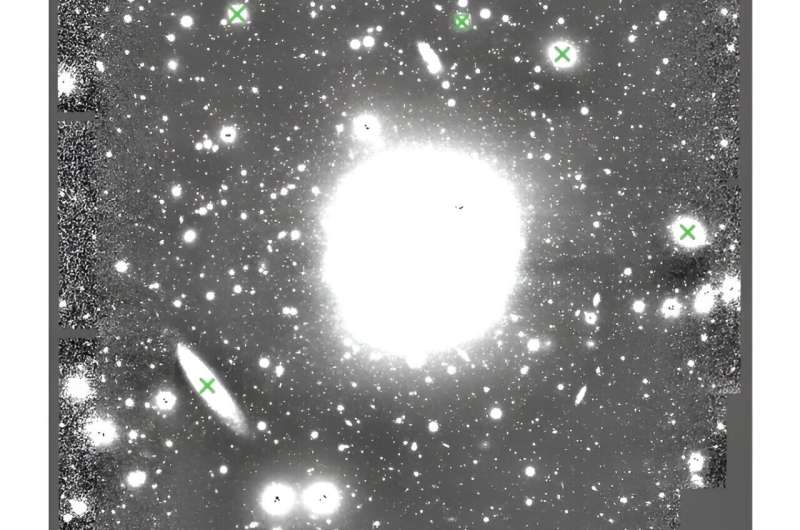20 June 2024

By Alimat Aliyeva
At the center of the Milky Way galaxy is a supermassive black hole called Sagittarius A*, whose mass is four million times the mass of the Sun, and some astronomers call it a soft giant because of its silence. But one day he may become extremely active, Azernews reports.
According to the researchers, they observed in real time an amazing brightness caused by the awakening of a supermassive black hole in the center of another galaxy from a state of rest and the beginning of rotation along with nearby material. The roar of a black hole was also recorded at this time.
Ground-based and orbiting telescopes were used to observe events in the core of the galaxy SDSS1335+0728, located about 360 million light-years away in the constellation Virgo. A light—year is the distance that light travels in one year (9.5 trillion kilometers).
Black holes are extremely dense objects, and their gravity is so strong that even light cannot escape the attraction of these giants. Their sizes range from a mass equivalent to one star to monsters existing in the centers of many galaxies, millions or even billions of times larger than celestial bodies. The mass of the supermassive black hole in the galaxy SDSS1335+0728 is about a million times the mass of the Sun.
The environment around a supermassive black hole can be unusually "creepy" as it tears apart stars and absorbs any other material within its gravitational pull. The researchers reported that a rotating disk of diffuse material had formed around the supermassive black hole SDSS1335+0728, and that some of the matter had been depleted. This is called an accretion disk and emits energy at very high temperatures, sometimes exceeding the temperature of the entire galaxy.
Such a bright and compact region, powered by a supermassive black hole in the center of the galaxy, is called the "active galactic core." According to astrophysicist Paula Sanchez Saes of the European Southern Observatory in Germany, these nuclei emit large amounts of energy at wavelengths from radio to gamma rays. He added that such nuclei are considered to be among the brightest objects in the universe. The study of active galactic nuclei is crucial for understanding the evolution of galaxies and the physics of supermassive black holes.
Astronomers believe that the black hole in question is located far enough from Earth and does not pose a threat to our planet.
Galaxy NGC 4696 hosts a complex globular cluster system, observations find

Using the Magellan Telescopes in Chile, astronomers have performed photometric observations of a giant elliptical galaxy known as NGC 4696. The observations reveal that the galaxy has a complex globular cluster system. The finding was detailed in a paper published June 12 on the pre-print server arXiv.
NGC 4696 is an elliptical galaxy at a distance of about 145 million light years. It is the brightest galaxy of the Centaurus Cluster of galaxies, has an apparent size of 4.5 by 3.2 arcminutes, and a heliocentric velocity of approximately 2,958 km/s.
Previous observations of NGC 4696 have detected a filamentary structure crossing its central region and extending towards a nearby galaxy designated NGC 4696B. This suggests that NGC 4696 may have undergone a merger in the past or that the material was acquired by ram-pressure stripping of NGC 4696B.
Study of globular clusters (GCs) in and around NGC 4696 has the potential to provide more hints about its history, in particular its assembly and evolution. That is why a team of astronomers led by Sara Federle of the Andrés Bello National University in Chile has investigated NGC 4696, focusing mainly on its globular cluster system (GCS).
"We presented the analysis of the GCS of the giant elliptical NGC 4696. The measurements are based on deep Magellan 6.5m/MegaCam (g′, r′, i′) photometry," the researchers wrote in the paper.
First of all, Federle's team selected a sample of 3,973 globular cluster candidates in the field of NGC 4696. Afterward, by applying a two color selection, they identified a total of 3,818 GC candidates.
By analyzing the sample of identified GC candidates, the astronomers found that the GCS of NGC 4696 is disturbed, which suggests a complex evolution with other neighboring members of the Centaurus Cluster.
It turned out that the GCS of NGC 4696 has a bimodal color distribution with the blue peak at 0.763 mag and the red peak at 1.012 mag. The blue and red populations are divided at approximately 0.905 mag.
Furthermore, the study found that the color distribution in the GCS does not show the presence of a significant blue tilt—when blue peaks become redder for increasing cluster's luminosities. However, it exhibits a trend with the radius, where at small galactocentric distances, a unimodal distribution is preferable to a bimodal one, which points to the presence of an intermediate GC population.
The study also found that the GCS' metallicity distribution also showcases a bimodal trend and that the radial density profiles show different slopes for the blue and red populations. In addition, it appears that the azimuthal distributions for the total, red and blue populations of GC candidates are well fitted by an asymmetrical sinusoidal distribution, suggesting that interactions between NGC 4696 and its two nearby galaxies may have played a role in shaping its GCS.
"All these results point toward a complex GCS, strongly influenced by the interaction history of NGC 4696 with the other galaxies of the Centaurus cluster," the authors of the paper concluded.
More information: Federle et al, The turbulent life of NGC 4696 as told by its globular cluster system, arXiv (2024). DOI: 10.48550/arxiv.2406.08635
\
Journal information: arXiv
© 2024 Science X NetworkObservations explore globular cluster system in the galaxy NGC 4262
No comments:
Post a Comment